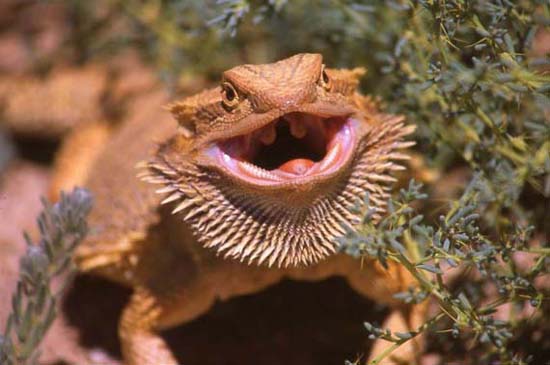The Ultimate Bearded Dragon Cage Setup Guide for Beginners
Introduction
Bearded dragons are popular pets for many reasons. They’re fun, easy to care for, and have unique personalities. However, providing a comfortable and safe environment for your bearded dragon is crucial for their health and happiness. In this article, we’ll take you through the steps for setting up a bearded dragon cage that will make your pet feel right at home.
Choosing the Right Cage

The first step in setting up a bearded dragon cage is selecting the appropriate size and type of enclosure. Bearded dragons require a spacious cage that allows them to move around freely. A 40-gallon terrarium is a good starting point for juvenile bearded dragons. However, adult bearded dragons require at least a 75-gallon terrarium.
When selecting a cage, keep in mind that bearded dragons are from the desert, so they need a dry environment. Therefore, the cage should have adequate ventilation to prevent excess humidity. The ideal temperature range for a bearded dragon is between 75-85°F on the cool side and 95-105°F on the warm side. Make sure that the cage has a basking area that can reach 100°F or higher.
Habitat Essentials
Once you have selected a cage, you’ll need to add some essentials to create a habitat that suits your bearded dragon’s natural environment. Here’s a list of must-haves:
Substrate

Bearded dragons need a substrate that is easy to clean and won’t cause impaction if ingested. Some substrate choices include reptile carpet, paper towels, and tile. Avoid using sand or small particles that can stick to food and cause digestive issues.
Heat Source

Bearded dragons require a heat source to regulate their body temperature. A basking lamp or ceramic heat emitter can provide the necessary warmth. Position the heat source on the warm side of the cage and use a thermometer to monitor the temperature.
UV Lighting

Bearded dragons need UV lighting to produce vitamin D3, which is essential for their health. Make sure to use a UVB bulb and replace it every 6-12 months, as the UV output diminishes over time. Position the bulb within 12 inches of the basking spot.
Decor and Hiding Spots

Bearded dragons need hiding spots to feel secure and safe. You can add rocks, branches, and tunnels to create a naturalistic environment. Make sure that the decor is securely placed to prevent it from falling on your bearded dragon.
Feeding and Watering
Bearded dragons are omnivores and require a balanced diet of insects, vegetables, and fruits. Offer feeder insects such as crickets, mealworms, and superworms regularly, and supplement with dark leafy greens and squash. Avoid feeding your bearded dragon spinach or high-fat foods that can cause health issues.
Provide a shallow dish of water for drinking and soaking. Change the water daily to ensure that it’s clean and fresh.
Maintenance and Cleaning
Maintaining a clean cage is essential for the health of your bearded dragon. Remove uneaten food and feces daily to prevent bacterial growth. Clean the cage thoroughly every 2-4 weeks by removing all decor and substrate, disinfecting the cage, and replacing everything with fresh substrate.
Conclusion
A well-designed bearded dragon cage setup can help keep your pet healthy and happy. Make sure to select an appropriate cage size and type, equip it with the necessary essentials, feed your bearded dragon a balanced diet, and keep the cage clean. By following these tips, you’ll be on your way to providing a comfortable and safe home for your new bearded dragon.
